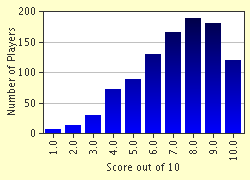Quiz Answer Key and Fun Facts
1. There are two systems in which blood travels in the cardiovascular system. Which of these are they?
2. Blood flows through the heart in this order: right atrium, right ventricle, pulmonary circuit, left atrium, left ventricle...into what vessel is the blood pumped from the left ventricle?
3. The valve between the right atrium and the right ventricle is called the _______ valve.
4. In a blood pressure measurement reading 120/80, the number in the denominator is which reading?
5. Which chamber receives the deoxygenated blood from the systemic system first?
6. What is the medical term for a severe constricting pain in the chest due to an insufficient blood supply to the heart?
7. A small mass of specialized muscle on the back wall of the right atrium, also known as the pacemaker, is medically known as what?
8. When you check the pulse of someone by placing two fingers on the side of their neck, you are feeling the blood being pumped through which vessel(s)?
9. What percentage by volume of your blood is plasma?
10. The system of arteries that supply the heart with its own, separate supply of blood is called?
Source: Author
Dr.Duodenum
This quiz was reviewed by FunTrivia editor
crisw before going online.
Any errors found in FunTrivia content are routinely corrected through our feedback system.

